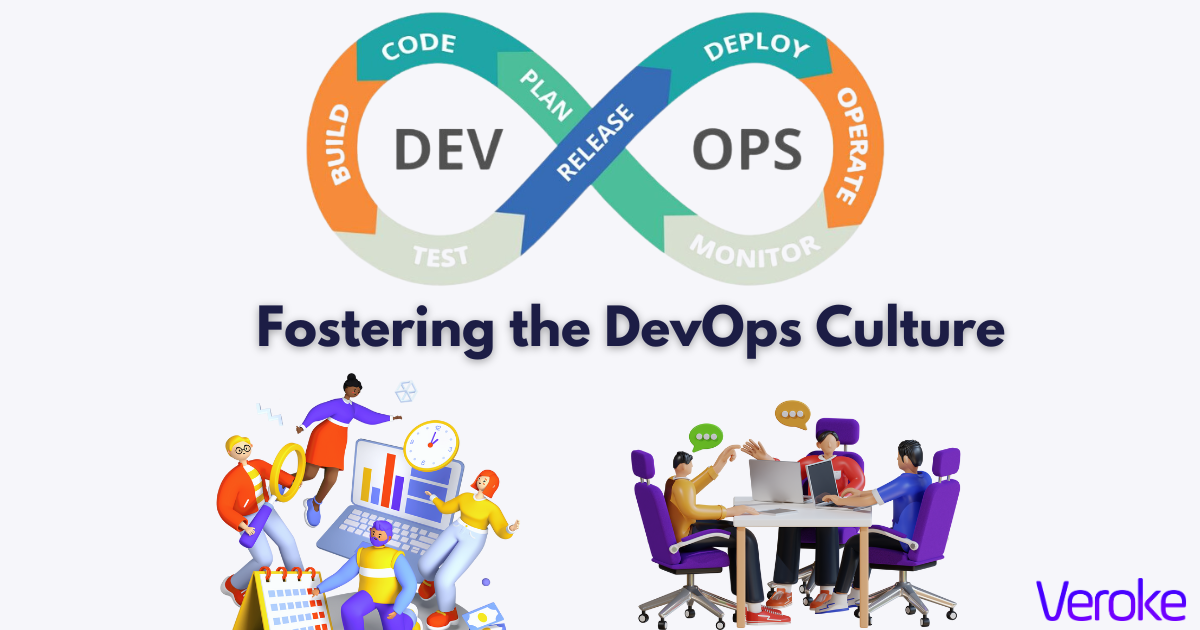Overview
Subscribe to Our Newsletter
Get expert guidance on various topics, resources, and exclusive insights
The 10 Best Tips to Make Your DevOps Work For You!
DevOps is not going to benefit your company unless you know how to leverage it.
It holds tremendous potential for transforming your organization’s software development processes. But you can find its true potential only if you understand how to use it effectively for your company.
Suppose your team moved from fragmented toolchains to a unified DevOps platform, and you have everything ready from methodologies to the DevOps team.
But is your setup ready to deliver optimal performance?
This is a common issue that organizations face when they switch to DevOps. So, we decided to take a look at the 10 best tricks that can help you maximize the potential of your DevOps platform.
Key Takeaways
- Foster a collaborative culture to unite teams and optimize workflows.
- Integrate security measures from the start to ensure a robust final product.
- Establish clear deployment protocols for swift releases.
- Cultivate an MVP (Minimum Viable Product) mindset to encourage rapid iteration and customer feedback
- Utilize microservices architecture for scalability and management ease.
- Regular testing and sync-ups prevent siloed work and ensure code quality.
- Implement robust monitoring and alerting systems for early issue detection.
1. Review Your Company Culture
A DevOps platform is intended to support a diverse range of users, including developers, testers, designers, product managers, database administrators, and whatnot.
Each group will use the platform differently, but coordination is essential to get the advantage of a unified DevOps. A culture of collaboration and communication is essential for bringing these groups together.
While concepts like communication and collaboration may seem abstract, they are fundamental to the success of a DevOps team. And these elements don’t occur spontaneously; they need to be cultivated.
Daily scrums, built-in opportunities for informal communication, and consistent retrospectives on what’s working and what’s not are effective starting points to ensure the DevOps platform serves everyone well.
2. Understand the Workflow
Each DevOps team has its own unique way of operating. The key is to set aside preconceived notions and examine existing workflows, challenges, and areas that might inhibit communication and collaboration closely.
The existence of hidden silos, even within a DevOps team, has the potential of slowing down the software development and delivery process.
Understanding the workflow of the team will allow you to determine if your platform is aligned with it well or if changes need to be made. DevOps platforms should act as seamless extensions of teams rather than adding new steps or processes that hinder progress.

3. Ensure Security from the Start
The security problems can accumulate quickly if not addressed at all the stages of production. Security gaps should be addressed as early as possible to avoid them becoming deeply embedded.
Security is often a point of contention in the software development lifecycle (SDLC), but a DevOps platform offers an ideal opportunity to incorporate security from the start.
This approach, known as “shifting left” and “shifting right,” ensures that security is an integral part of the process from beginning to end, with everyone taking responsibility.
Teams using a DevOps platform have reported significant improvements in identifying and resolving bugs.
4. Optimize Deployment Processes
One of the major advantages of a DevOps platform over a collection of disparate tools is the ability to achieve faster deployments. However, having an optimized deployment process is necessary to maximize this speed.
The DevOps team needs a streamlined deployment protocol that facilitates quick code commits across multiple environments without unnecessary hurdles or over-complications.
To establish an effective protocol, practice the deployment process, document each step, and hold regular meetings to review results and make the required adjustments. This approach accelerates time to market and ensures optimal performance throughout the software development lifecycle.
5. Embrace Integrated Change Management
Change management involves the effective and strategic development of IT infrastructure to better support the entire organization. Project teams commonly use this technique to integrate different technologies into one solution.
For this, development teams must collaborate closely with operations teams to understand the impact of technology changes at an organizational level. This means recognizing how adjustments in one area can affect the whole system and ensuring that all changes are beneficial across the board.
By practicing integrated change management, your teams can streamline the adoption of new technologies, minimize disruptions, and enhance the overall efficiency and reliability of your IT infrastructure.
6. Cultivate an MVP mindset
A DevOps platform enables teams to embrace a transformative concept: the minimum viable product (MVP). It is also known as “minimum viable change,” but the principle remains the same: implement the smallest possible change to gather customer feedback quickly.
This approach allows for rapid iteration and continuous improvement, which is one of the greatest benefits of a DevOps platform.
To get the full advantage, it’s important to ensure that team processes are aligned with this mindset shift. This means breaking down projects into the smallest feasible increments and deploying them swiftly to receive immediate feedback.
By doing so, teams can rapidly identify what works and what doesn’t, enabling them to make necessary adjustments without significant delays.
Cultivating an MVP mindset involves encouraging teams to focus on delivering essential features and functionality first, rather than striving for perfection from the outset. This iterative approach not only accelerates the development process but also ensures that the final product is more closely aligned with customer needs and expectations.
7. Maintain Continuous Monitoring
DevOps focuses on quick and continuous integration and deployment, but this fast-paced setup can lead to problems. Failures might pop up at any point during software development.
Continuous monitoring is essential for quickly identifying errors, ensuring optimal performance, reliability, and overall health of the software.
To enhance this process, set monitoring targets, such as development milestones, which provide insights into your team’s actual performance. Continuous monitoring gives you a clear picture of how well your DevOps implementation is functioning.
Consider using synthetic monitoring, where simulated customer interactions are used to test your application. This approach allows you to observe the exact actions and performance of your software before it is released to real users, helping to preemptively address potential problems.
8. Utilize Microservices
As your project grows, it becomes increasingly challenging to monitor and manage. The microservices architecture addresses this by breaking down complex systems into small, independent services.
This approach offers significant benefits, from simplifying deployment and scalability to enhancing management and modifiability. Microservices architecture involves designing an application as a collection of small, autonomous services, each built around a specific business capability and fulfilling a single purpose. These services operate independently, so a fault in one does not impact the others.
Using microservices, companies can easily add new features and deploy solutions more efficiently, thereby improving their delivery processes. This modular approach ensures that enhancements can be made seamlessly, without disrupting the overall system.
9. Running Regular Tests and Sync-ups
Making sure every line of code is thoroughly tested before release is crucial to avoid bugs in the final product.
Implementing a continuous testing strategy helps catch errors early and maintains high quality throughout development. It’s important to test every aspect of the code, including how it runs and its compatibility with other parts.
In DevOps, it’s easy to slip into old habits. Regular sync-ups among team members are essential to prevent working in silos. Collaboration ensures everyone is working towards the same goals, which is essential for success in DevOps.
10. Set a Monitoring and Alert System
Having a monitoring and alert system is essential within the context of DevOps. Given the rapid pace of development, the likelihood of errors accumulating is high.
By setting up a monitoring and alert system, you can keep track of potential issues. When something goes wrong, alerts are triggered, allowing your team to swiftly address the issue before it escalates. This proactive approach saves time and resources, as it eliminates the need for manual detection and lengthy troubleshooting processes.
Wrapping Up
In a nutshell, implementing these tips can significantly enhance your DevOps journey and help you achieve the desired results.
Keep in mind that it is not a one-time fix but a continuous process of refinement and adaptation. It’s about finding what works best for your organization and continually striving for improvement.
You see the potential is huge, as Credence Research forecasts that the DevOps market will generate $35.1 billion by 2030. This exponential growth underscores the importance and relevance of DevOps in modern software development.
If you’re looking to optimize your DevOps practices or explore how it can benefit your organization, don’t hesitate to reach out to us at info@veroke.com or book a free consultation with our experts.
FAQs
1) How to improve the DevOps process?
Improving the DevOps process involves setting clear goals, fostering collaboration, automating tasks, and continuously monitoring and optimizing performance. Regularly collecting and acting on feedback is also important.
2) What are the best DevOps practices?
Best practices in DevOps include continuous integration and delivery (CI/CD), infrastructure as code (IaC), robust monitoring, integrating security early, and fostering a culture of collaboration and continuous improvement.
3) Which is the most popular DevOps tool?
Jenkins is one of the most popular DevOps tools, known for its powerful automation capabilities. Other widely used tools include Docker for containerization, Kubernetes for orchestration, and Terraform for infrastructure as code.
Transform your Ideas into a Digital Reality
Get customized bespoke
solutions for your business.




